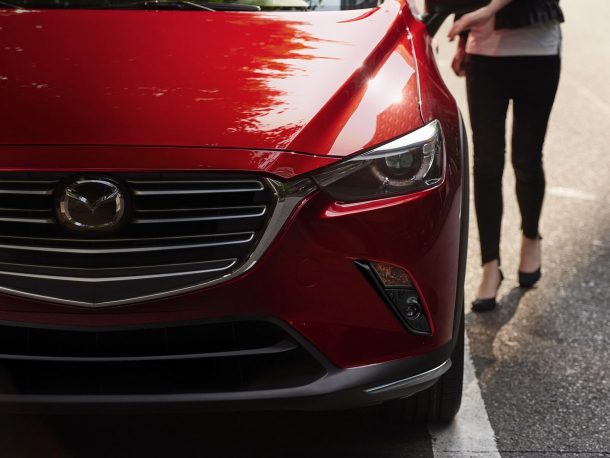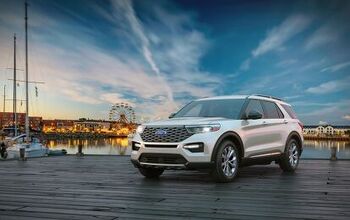When ICE Isn't Enough: Mazda's First Electric Still on Track for 2020, Plug-ins to Follow

Despite the recent development of a high-MPG, low-emission gasoline four-cylinder, Mazda’s future depends on lowering its emissions footprint even further. With regulators — especially those in Europe — backing ever more stringent environmental standards, Mazda hopes to avoid Fiat Chrysler-like penalties by adding a product at odds with the brand’s heritage. An electric vehicle.
With the help of its partners, Mazda’s new EV will make an appearance next year, followed up with a crop of plug-in hybrids buyers are more likely to take home.
In an interview with Automotive News, CEO Akira Marumoto said the popularity of the compact CX-5 is a major reason why his company’s European fleetwide emissions target remains unmet. The declining popularity of small diesel-powered models is another factor.
While the innovative Skyactiv-X internal combustion engine will certainly help the company make strides towards its goal, Marumoto said, it won’t be enough. (European orders for Mazda 3 models equipped with the engine opened last week; North American customers remain in wait-and-see mode).
Turning to future products, Marumoto said “the first Mazda battery-electric vehicle will hit the market next year. Finally, we will introduce plug-in hybrid models from 2021 or 2022. So we will eventually achieve the target, although we will have some difficulties in 2020.”
Smaller than its Japanese rivals and lacking their impressive R&D capability (as well as cash reserves), Mazda fields zero hybrids or EVs in its lineup. This is where teamwork comes in. Two years ago, Toyota bought a 5.05 percent stake in Mazda, with the two soon joining supplier Denso in signing an agreement to “jointly develop basic structural technologies for electric vehicles.” Financially and technologically, the effort is being spearheaded by Toyota, which footed 90 percent of the bill. Mazda and Denso ponied up the remainder.
The nature of the looming EV isn’t clear, though its development, removed from the rest of the Mazda product line, will ensure it appears as a standalone model. As for plug-in hybrids, Mazda isn’t the first rival automaker to benefit from Toyota’s development prowess. Ask Subaru about that.
A new rotary engine that may one day appear beneath the hood of a Mazda sports car might also find a home in the brand’s electrified offerings.
“Its first application will be as a range extender for EVs,” Marumoto said. “Inside Mazda, we all have the dream of seeing one day a vehicle powered by a rotary engine. But given the number of things we have to do, we had to put this on the back burner, and we have no time frame.”
[Image: Mazda]

More by Steph Willems
Latest Car Reviews
Read moreLatest Product Reviews
Read moreRecent Comments
- Honda1 Unions were needed back in the early days, not needed know. There are plenty of rules and regulations and government agencies that keep companies in line. It's just a money grad and nothing more. Fain is a punk!
- 1995 SC If the necessary number of employees vote to unionize then yes, they should be unionized. That's how it works.
- Sobhuza Trooper That Dave Thomas fella sounds like the kind of twit who is oh-so-quick to tell us how easy and fun the bus is for any and all of your personal transportation needs. The time to get to and from the bus stop is never a concern. The time waiting for the bus is never a concern. The time waiting for a connection (if there is one) is never a concern. The weather is never a concern. Whatever you might be carrying or intend to purchase is never a concern. Nope, Boo Cars! Yeah Buses! Buses rule!Needless to say, these twits don't actual take the damn bus.
- MaintenanceCosts Nobody here seems to acknowledge that there are multiple use cases for cars.Some people spend all their time driving all over the country and need every mile and minute of time savings. ICE cars are better for them right now.Some people only drive locally and fly when they travel. For them, there's probably a range number that works, and they don't really need more. For the uses for which we use our EV, that would be around 150 miles. The other thing about a low range requirement is it can make 120V charging viable. If you don't drive more than an average of about 40 miles/day, you can probably get enough electrons through a wall outlet. We spent over two years charging our Bolt only through 120V, while our house was getting rebuilt, and never had an issue.Those are extremes. There are all sorts of use cases in between, which probably represent the majority of drivers. For some users, what's needed is more range. But I think for most users, what's needed is better charging. Retrofit apartment garages like Tim's with 240V outlets at every spot. Install more L3 chargers in supermarket parking lots and alongside gas stations. Make chargers that work like Tesla Superchargers as ubiquitous as gas stations, and EV charging will not be an issue for most users.
- MaintenanceCosts I don't have an opinion on whether any one plant unionizing is the right answer, but the employees sure need to have the right to organize. Unions or the credible threat of unionization are the only thing, history has proven, that can keep employers honest. Without it, we've seen over and over, the employers have complete power over the workers and feel free to exploit the workers however they see fit. (And don't tell me "oh, the workers can just leave" - in an oligopolistic industry, working conditions quickly converge, and there's not another employer right around the corner.)































Comments
Join the conversation
They should name their electrics RX and bill them as the evolution of the rotary engine. Show a gas rotary morphing into an electric.
Mazda is a lot bigger than Subaru, by volume about 60% (1.6 million versus 1.0 million). Subaru is so dependent on the US, over 70% of its production is sold there, but at least Mazda is competitive worldwide unlike Subaru. Subaru is the dinky little auto company of Japan. What the post author thinks Toyota have taught Subaru is beyond me. The D4S in the BRZ/GT86 is about it. Subaru didn't take the bait on dual port and DI injection on any of its models after that initial fiasco and god knows how many replaced engines with popped DI injectors, chirping high pressure fuel pumps, etc. Toyota don't even know how to make their cars go around corners like Subaru, and subbed out the Supra to BMW. Toyota has a hybrid system that works - might as well flog it to its rivals in which it has some stock share and make some loot.